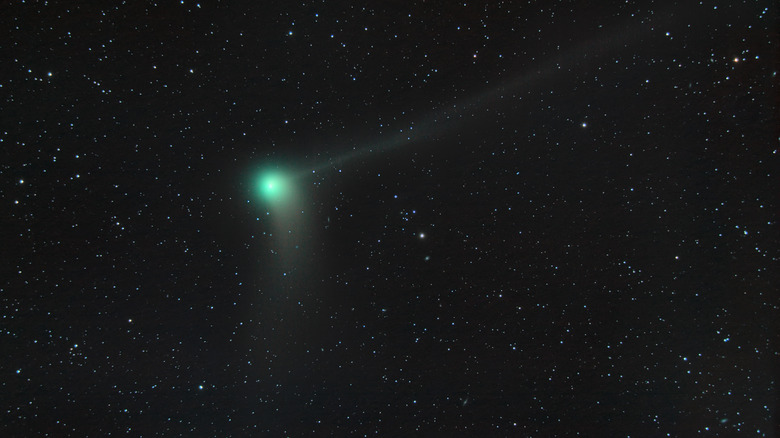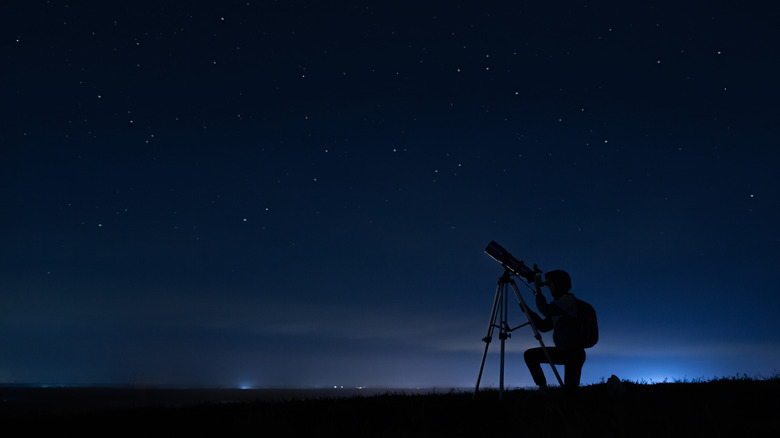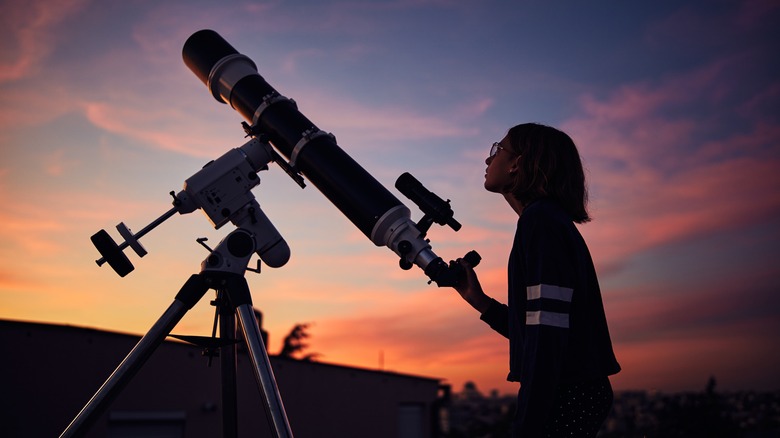Blue comet: Super rare phenomenon, appearing only once every 50,000 years
- Tram Ho
With the current level of scientific development of mankind, we can predict much of what will happen in the night sky. For several centuries, humans have understood the movements of the stars and planets around us. We can predict things like eclipses, transits, and other cosmic events.
However, over time, our Solar System will have more unpredictable guests – comets, which are constantly moving through space and sometimes they can be seen with the naked eye. Some of them are downright spectacular, such as the comet Hale-Bopp, which passed through the night sky in the 1990s.
However, there are still super rare astronomical phenomena, which take several thousand, even tens of thousands of years to appear once. As The Weather Network notes, comet C/2022 E3 (ZTF) has such a large orbit that it was last seen by humans about 50,000 years ago — about the same time that Neanderthals and modern humans shared. share the Earth. In addition, it is also a super bright comet, enough to be seen with the naked eye.

The recently discovered blue comet, known as C/2022 E3 (ZTF), is currently passing through our inner Solar System. This comet was first seen in space last March when it was already inside the orbit of Jupiter.
Comets are usually, like stars, galaxies, and other objects in the universe, pale white. For C/2022 E3 (ZTF) it doesn’t: it’s green. Or perhaps more accurately, the human eye perceives it as green.
Comets are made up of frozen clumps of gas, rock, and dust. When a comet approaches the Sun, it heats up and spews out gas and dust into a glowing mass that looks like a long tail. According to research by chemist Gerhard Herzberg, the comet’s green color is due to the presence of compounds such as diatomic carbon and cyanogen that give it its green color.
On March 2, 2022, astronomers Frank Masci and Bryce Bolin discovered for the first time an object they initially identified as an asteroid. It appeared very dim at the time. When first discovered, the comet was located 399 million miles (643 million km) from the Sun.

The fact that this is the first time people have seen this comet in 50,000 years makes it a rare event. And, this may be the last time we see this comet again. Astronomers at SPACE, the comet is in a parabolic orbit, which means it’s not a closed orbit. It will return to deep space and never again.
According to NASA, when it approaches its closest point to Earth on February 1 and 2, then people will be able to see it in the Southern Hemisphere.
However, at the present time, astronomers have not been able to say for sure whether the next appearance of comet C/2022 E3 (ZTF) will be visible to the naked eye, although it is almost certain. will certainly be seen with even the weakest telescopes and binoculars.

As the comet moves closer to the Sun, it will decay with increased radiation. This process releases gas and dust, forming a tail behind the comet, and creating a temporary atmosphere – known as a coma – around the object’s nucleus. While the gas tail is formed by the action of charged particles from the solar wind on gas molecules released by the comet, the dust tail is the result of the interaction of photons emitted by the Sun with dust. rising from the coma.
According to EarthSky, people in the Northern Hemisphere used telescopes and binoculars that could see the northeast horizon just before midnight to observe comet C/2022 E3 for most of January.
According to NASA, comets can be difficult to spot in the night sky, but this comet glows steadily as it moves through the Solar System and can be seen with the naked eye.
Skywatchers can see the blue comet with the naked eye when it makes its closest approach to Earth in early February, when it can be spotted near the bright star Polaris, also known as the North Star. .
Comet C/2022 E3 (ZTF) was discovered last March by astronomers using the wide-field survey camera of the Zwicky Transient Facility at Palomar Observatory, north of San Diego, USA.
Source: Earthlymission; Nature; NASA
Source : Genk
